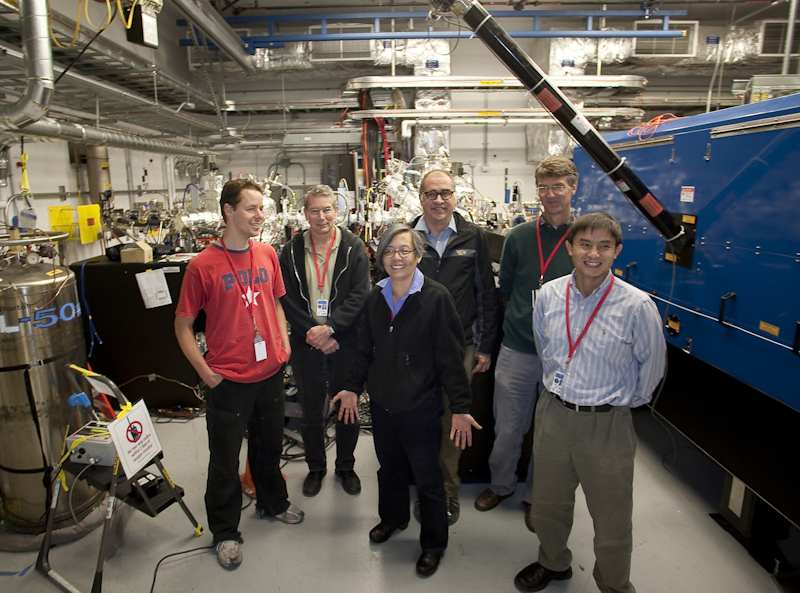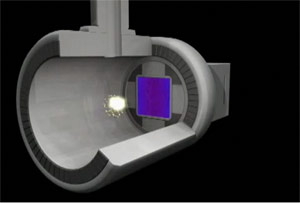Science Begins at the World's Most Powerful X-ray Laser
Menlo Park, Calif.—The first experiments are now underway using the world's most powerful X-ray laser, the Linac Coherent Light Source, located at  the Department of Energy's SLAC National Accelerator Laboratory. Illuminating objects and processes at unprecedented speed and scale, the LCLS has embarked on groundbreaking research in physics, structural biology, energy science, chemistry and a host of other fields.
the Department of Energy's SLAC National Accelerator Laboratory. Illuminating objects and processes at unprecedented speed and scale, the LCLS has embarked on groundbreaking research in physics, structural biology, energy science, chemistry and a host of other fields.
In early October, researchers from around the globe began traveling to SLAC to get an initial glimpse into how the X-ray laser interacts with atoms and molecules. The LCLS is unique, shining light that can resolve detail the size of atoms at ten billion times the brightness of any other manmade X-ray source.
“No one has ever had access to this kind of light before," said LCLS Director Jo St?hr. “The realization of the LCLS isn’t only a huge achievement for SLAC, but an achievement for the global science community. It will allow us to study the atomic world in ways never before possible.”
The LCLS is a testament to SLAC’s continued leadership in accelerator technology. Over 40 years ago, the laboratory’s two-mile linear accelerator, or linac, was built to study the fundamental building blocks of the universe. Now, decades later, this same machine has been revitalized for frontier research underway at the LCLS.
After SLAC’s linac accelerates very short pulses of electrons to 99.9999999 percent the speed of light, the LCLS takes them through a 100-meter stretch of alternating magnets that force the electrons to slalom back and forth. This motion causes the electrons to emit X-rays, which become synchronized as they interact with the electron pulses over their long slalom course, thereby creating the world’s brightest X-ray laser pulse. Each of these laser pulses packs as many as 10 trillion X-ray photons into a bunch that's a mere 100 femtoseconds long—the time it takes light to travel the width of a human hair.
By 2013, all six LCLS scientific instruments will be online and operational, giving researchers unprecedented tools for a broad range of research in material science, medicine, chemistry, energy science, physics, biology and environmental science.

Source: SLAC